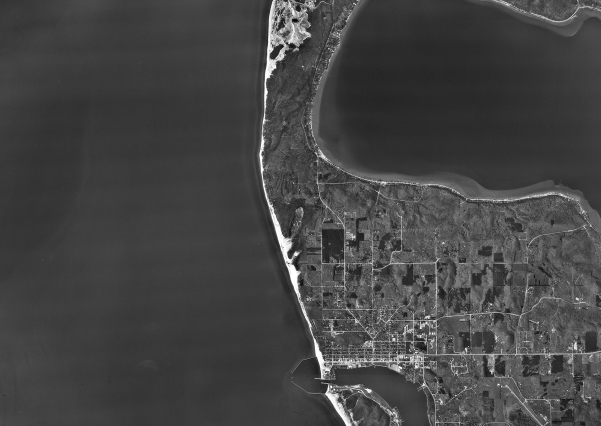Spatial Databases: Inherent Difficulties
In addition to all the problems one has in building, maintaining, and operating any large database, spatial databases have their own peculiarities and challenges. Here are some that need to be considered.
Size
An airplane pilot once said (in pre-radar days) that the thing that kept ATC (Air Traffic Control) from folding up completely in its attempts to keep airplanes from colliding was that “God packs a lot of airspace in three dimensions.” Anyone who has worked planning or management related to the land knows that God also puts a lot of surface area in two dimensions. Thus, any spatial database used for land and resource considerations will either (a) not cover much area, (b) not include much detail, or (c) be very big. Very big databases, regardless of their simplicity, are expensive to build and maintain.
Spatial data in general use up a lot of computer memory and disk space. For example, Figure 2-3 is an orthophoto image of a part of northern Michigan (around Frankfort and Pilgrim) and Lake Michigan.3 It represents an area of about 30 square miles.
FIGURE 2-3 An orthophotoquad image of a portion of northwestern Michigan

The image consists of square (picture elements, or pixels) that are 1 meter on a side and can be displayed white, black, and 254 shades of gray. The file underlying the image, represented in the most basic form, binary, ...
Get Introducing Geographic Information Systems with ArcGIS: A Workbook Approach to Learning GIS, 3rd Edition now with the O’Reilly learning platform.
O’Reilly members experience books, live events, courses curated by job role, and more from O’Reilly and nearly 200 top publishers.

